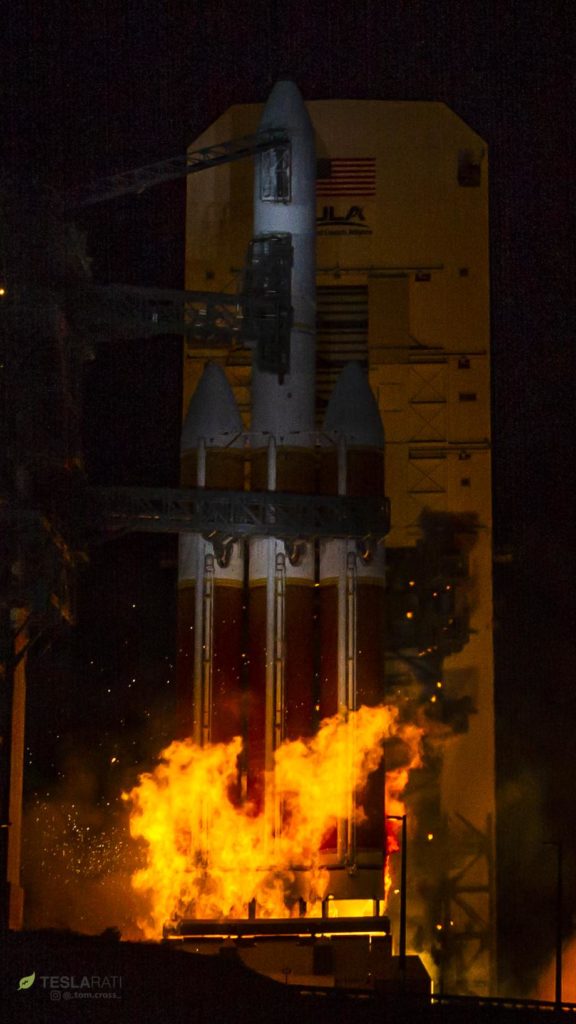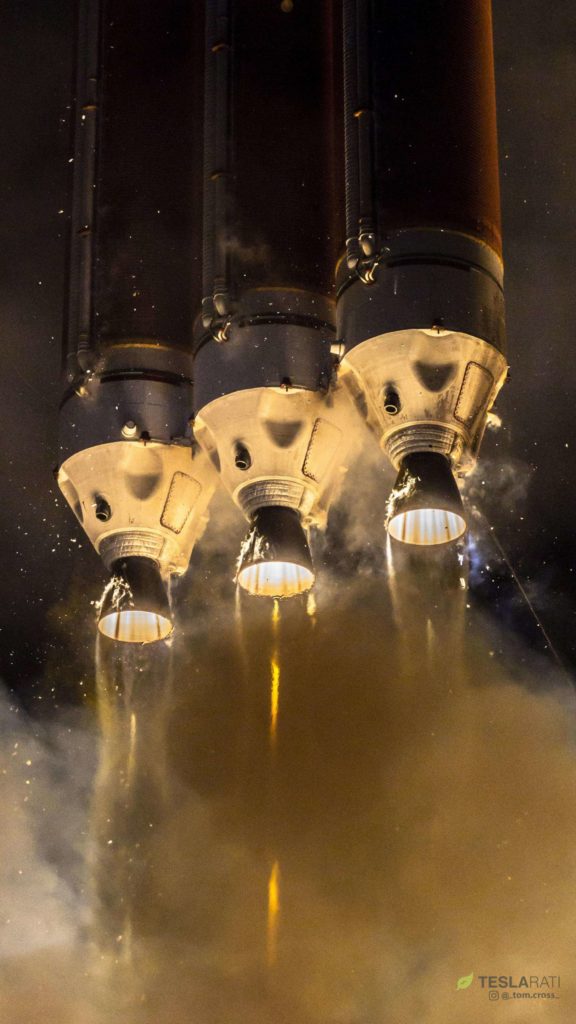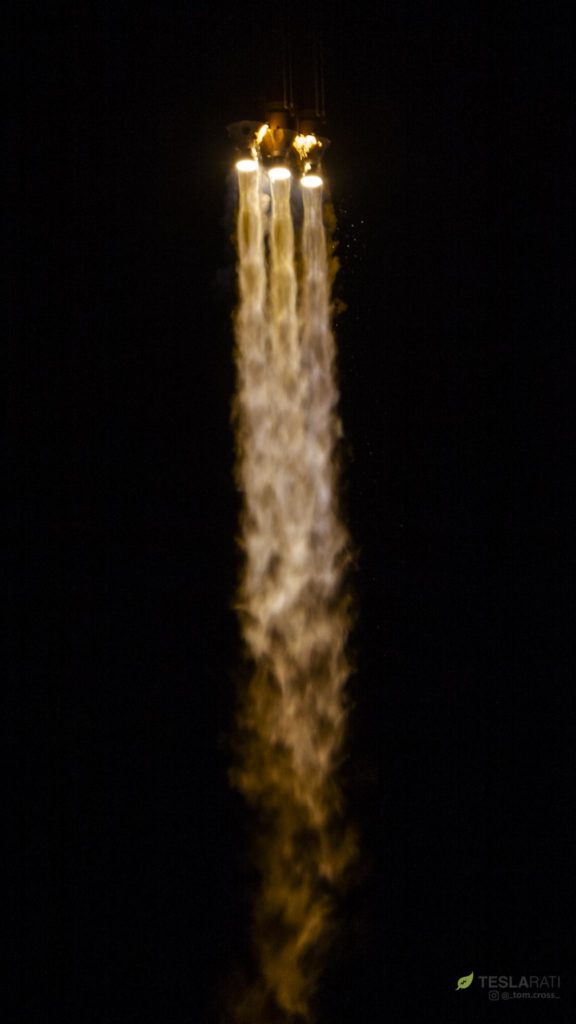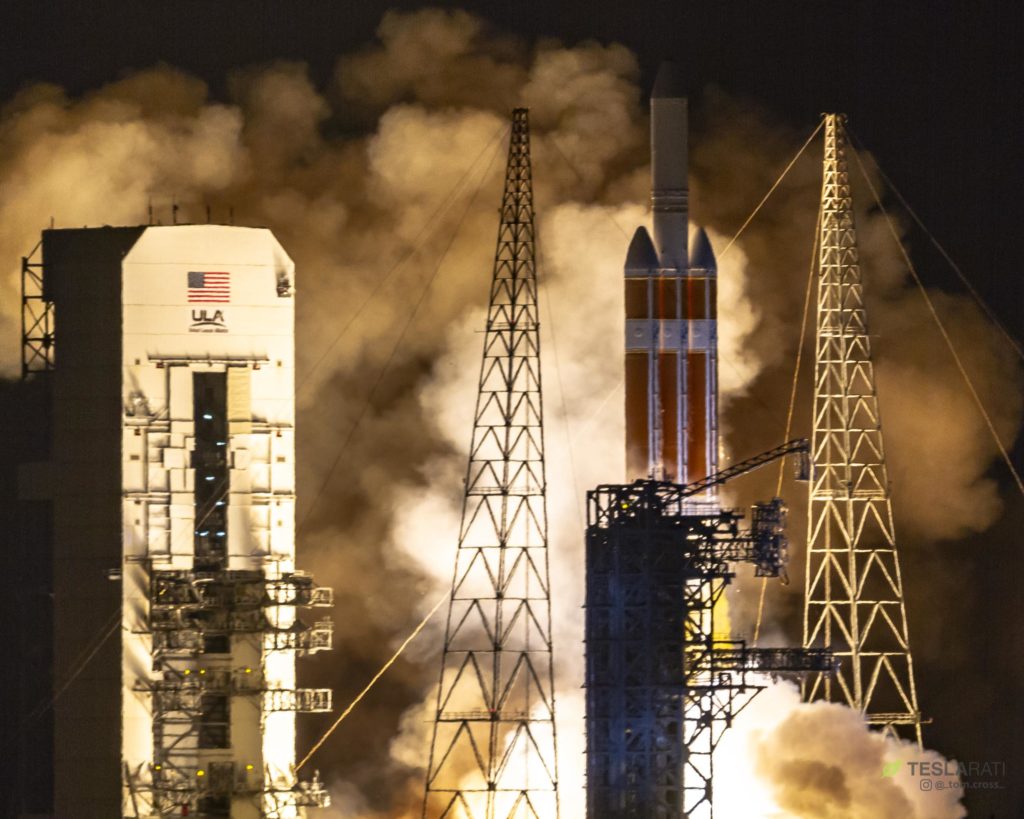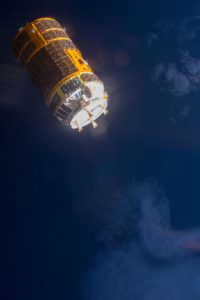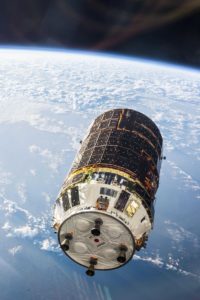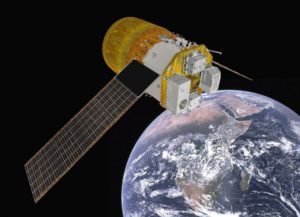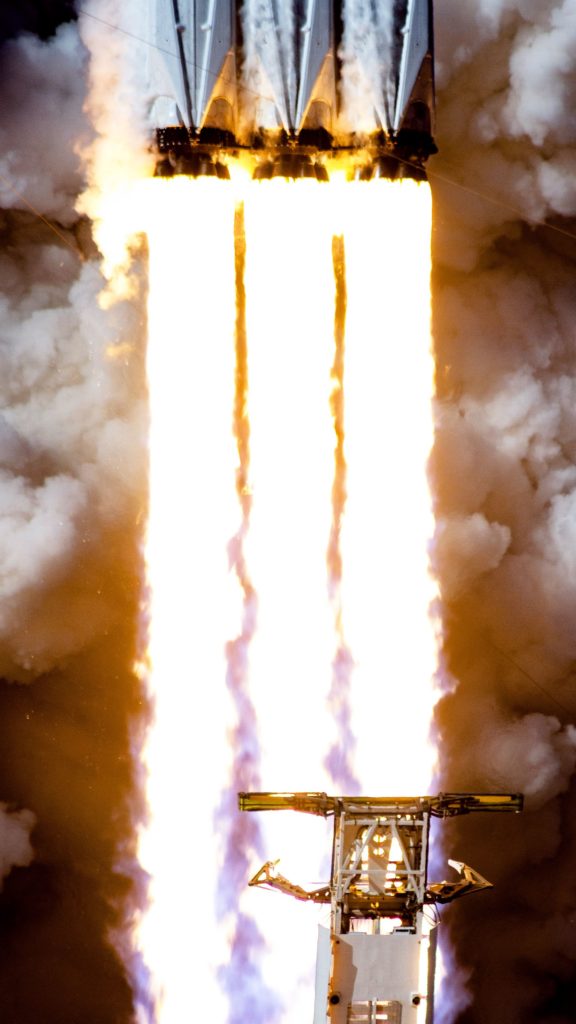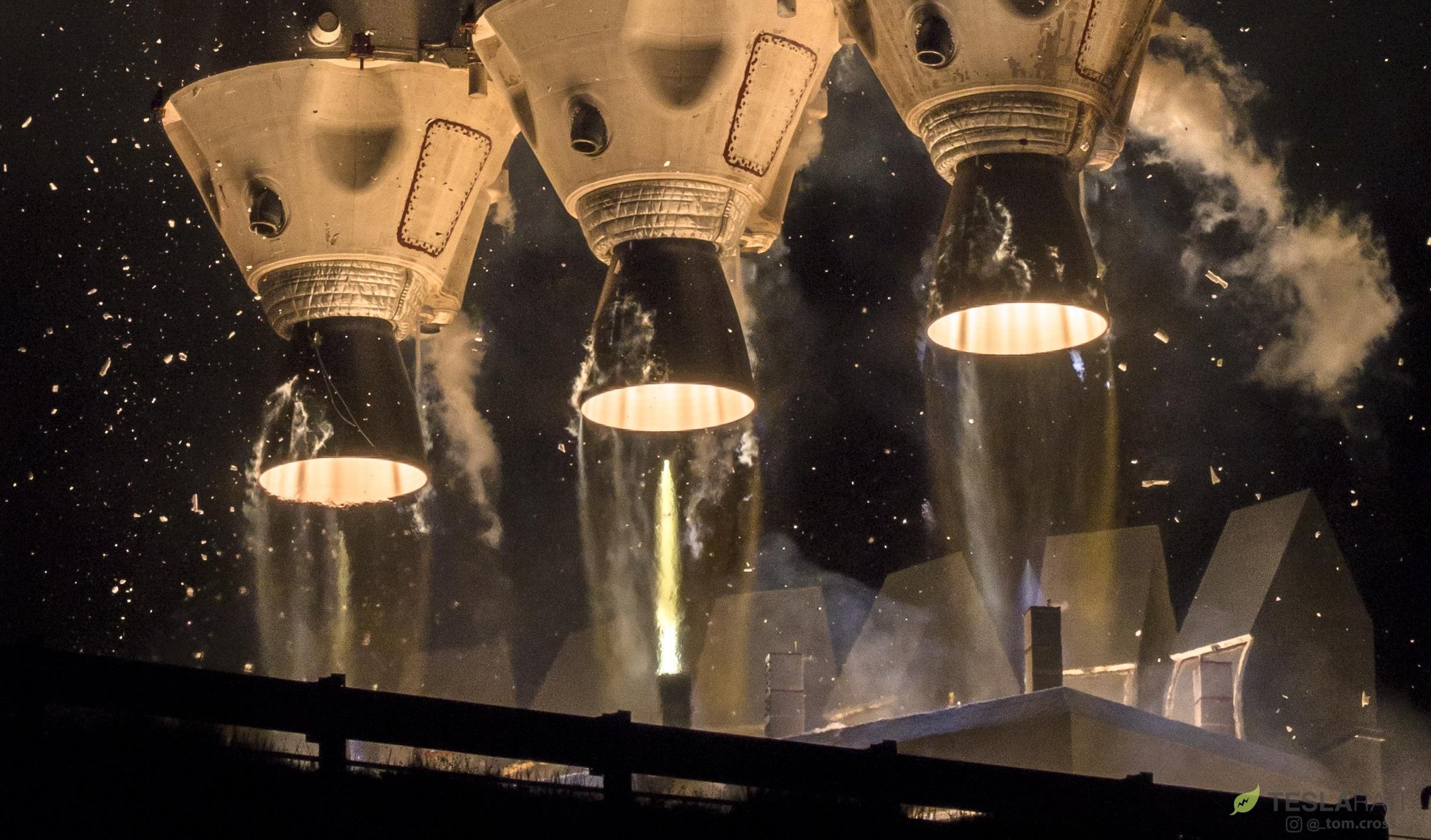
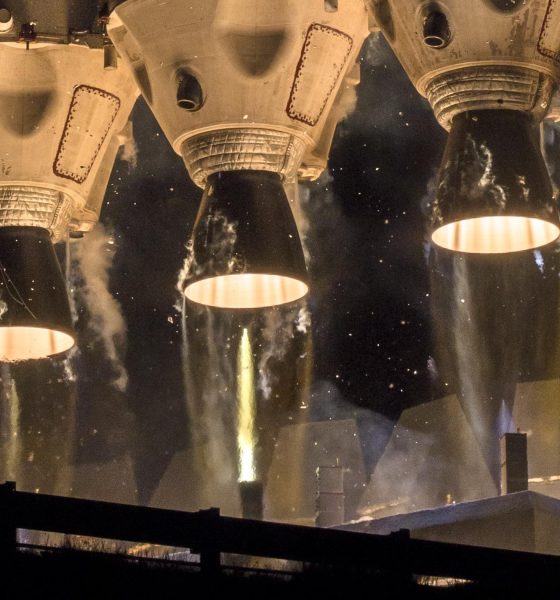
SpaceX
SpaceX’s Falcon Heavy eyed by Europe/Japan as ULA nails spectacular Delta Heavy launch
According to RussianSpaceWeb, SpaceX’s Falcon Heavy rocket is under serious consideration for launches of major European and Japanese payloads associated with the Lunar Orbital Platform-Gateway (formerly the Deep Space Gateway).
Currently targeting launch readiness in the mid-2020s, those heavy scientific and exploratory government payloads are eyeing Falcon Heavy at the same time as the United Launch Alliance’s (ULA) Delta IV Heavy – the most powerful operational rocket prior to FH’s debut – is busy wrapping up a scientific launch for NASA and prepping for another launch in September for its singular anchor customer, the National Reconnaissance Office (NRO).
https://twitter.com/_TomCross_/status/1028599075002896384
A breathtaking mission to the sun
United Launch Alliance (ULA) has just completed the ninth successful launch of its Delta IV Heavy rocket, originally developed by Boeing in the 1990s and debuted in 2004 before the company’s launch vehicle subsidiary joined forces with Lockheed Martin’s own rocket branch. Delta Heavy’s August 12th mission saw the rocket send a small NASA payload known as Parker Solar Probe (PSP) on a trajectory that will eventually place the craft closer to the Sun than any human-made object before it. In pursuit of a better understanding of how exactly our solar system’s namesake functions and behaves, PSP will also become the fastest object ever created by humans, traveling at an extraordinary 200 km/s (120 mi/s) at the zenith of its deepest periapses (the point at which PSP is closest to the sun).
In a fitting send-off for the small heat-shielded spacecraft, Delta IV Heavy’s launch was a spectacle to behold, with clear skies and the cover of darkness combining to magnify the best of the rocket’s telltale features. Upon ignition of its three massive RS-68 rocket engines, each producing over 700,000 lb-ft of thrust, the rocket is held down for several seconds in a process that famously culminates in what appears to be self-immolation just before liftoff, a consequence of the rocket burning off excess hydrogen fuel expelled during the ignition process. Unlike Falcon 9’s dirtier kerosene-oxygen combustion, Delta Heavy’s hydrogen and oxygen fuel produce a flame that is nearly transparent, aside from a bright orange tint created by materials in each engine’s ablative (read: designed to disintegrate) nozzle.
- Delta IV Heavy opts for ‘medium-well’ just before launch. (Tom Cross)
- The extraordinary might of Delta IV Heavy’s hydrolox-burning RS-68A engines, producing a combined 2.1 million pounds of thrust at liftoff. (Tom Cross)
- Delta IV Heavy takes to the sky on its tenth launch, with Parker Solar Probe in tow. (Tom Cross)
- Delta IV Heavy takes to the sky on its tenth launch, with Parker Solar Probe in tow. (Tom Cross)
While Delta IV Heavy has used one of its other nine successful launches for a NASA payload (a test flight of the Orion capsule), all seven remaining missions were conducted for the USAF (1) and the National Reconnaissance Office (NRO; 6), and all six remaining missions on the rocket’s manifest also happen to be for the NRO. Put simply, Delta IV Heavy would not exist today if the NRO did not have an explicit and unflappable need for the capabilities it offers. The primary downside is cost: DIVH costs at least $350 million and usually more than $400m per launch. Thankfully for ULA, the NRO has very few problems with money, and the agency’s estimated annual budget of $10 billion (2013) is more than half of NASA’s entire budget.
After Falcon Heavy’s successful debut, Delta IV Heavy’s monopoly over heavyweight NRO and USAF payloads is rapidly coming to an end, and both agencies are almost certainly attempting to equally quickly certify SpaceX’s newest rocket for critical national security space (NSS) launches. With that influx of the slightest hint of competition, Delta IV Heavy’s ~$400 million price tag starts to look rather painful in comparison to Falcon Heavy’s cost ceiling of around $150 million, potentially much less in the event that 1-3 of its boosters are recoverable. That competition likely won’t kill Delta IV Heavy, thanks entirely to the anchor support of the NRO, but it most certainly will guarantee that Delta Heavy is retired the moment ULA’s next-gen Vulcan rocket is ready to take over, likely no earlier than 2024.
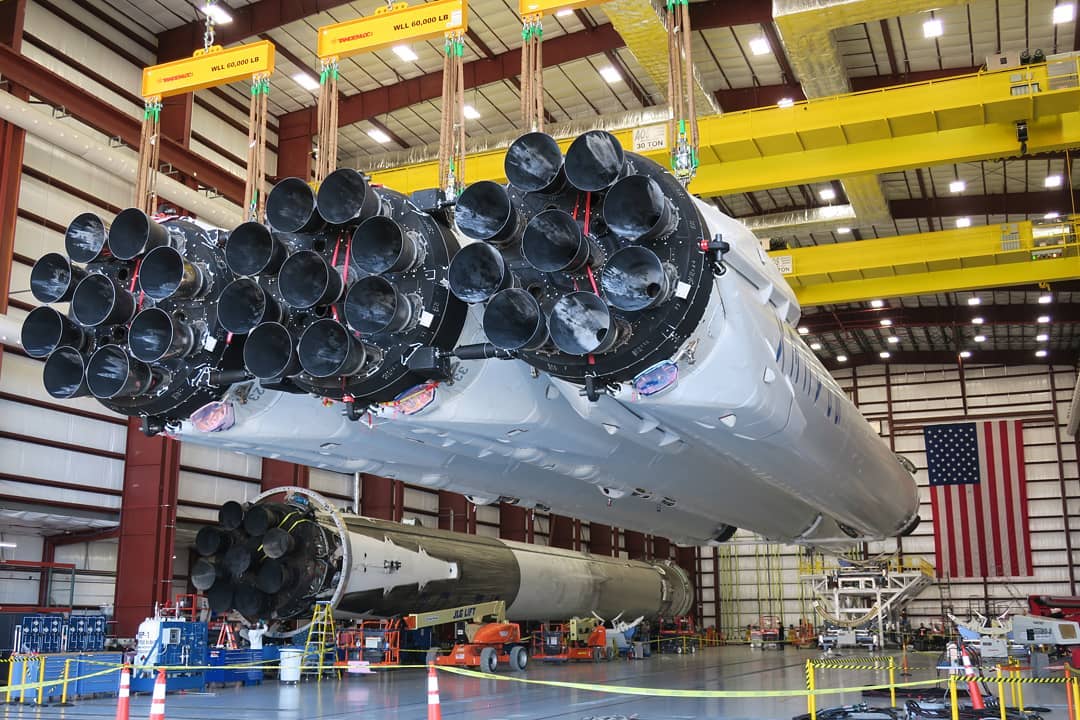
Outside of the NRO, however, there is a surprising amount of interest in Falcon Heavy for interesting (and heavy) government payloads, particularly with respect to the NASA/ESA/JAXA/Roscosmos cooperative lunar space station, known as the Lunar Orbital Platform-Gateway.
Falcon Heavy enters the mix
The first payload considering Falcon Heavy for launch services is the Japanese Space Agency’s (JAXA) HTV-X, and upgraded version of a spacecraft the country developed to assist in resupplying the International Space Station (ISS). HTV-X is primarily being designed with an ISS-resupply role still at the forefront, but Russianspaceweb recently reported that JAXA is seriously considering the development of a variant of the robotic spacecraft dedicated to resupplying the Lunar Orbital Platform-Gateway (LOPG; and I truly wish I were joking about both the name and acronym).
- JAXA’s first-generation HTV spacecraft on its fourth of nine planned launches, 2013. (NASA)
- JAXA’s first-generation HTV spacecraft on its fourth of nine planned launches, 2013. (NASA)
- The best available visualization of HTV-X, Japan’s upgraded and more affordable ISS resupply spacecraft. (JAXA)
As the name suggests, LOPG is fundamentally a shrunken, upgraded copy of the present-day International Space Station but with its low Earth orbit swapped for an orbit around the Moon. Why, you might ask? It happens that that question is far less sorted at this point than “how”, and there’s a fairly strong argument to be made that NASA is simply attempting to create a low-hanging-fruit destination for the chronically delayed SLS rocket and Orion spacecraft it routinely spends ~20% of its annual budget on. The alternatives to such a crewed orbital outpost are actually landing on the Moon and building a base or dramatically ramping development of foundations needed to enable the first human missions to Mars.
ARTICLE: Cislunar station gets thumbs up, new name in President's budget request – https://t.co/a1XhAPZ7ot
– By Philip Sloss.
(Numerous renders by Nathan Koga, including the epic one below) pic.twitter.com/j0cr2ze7qG
— NSF – NASASpaceflight.com (@NASASpaceflight) March 16, 2018
Regardless of the LOPG’s existential merits, a lot of energy (and money) is currently being funneled into planning and initial hardware development for the lunar station’s various modular segments. JAXA is currently analyzing ways to resupply LOPG and its crew complement with its HTV-X cargo spacecraft, currently targeting its first annual ISS resupply mission by the end of 2021. While JAXA will use its own domestic H-III rocket to launch HTV-X to the ISS, that rocket simply is not powerful enough to place a minimum of ~10,000 kg (22,000 lb) on a trans-lunar insertion (TLI) trajectory. As such, JAXA is examining SpaceX’s Falcon Heavy as a prime (and affordable) option: by recovering both side boosters on SpaceX’s drone ships and sacrificing the rocket’s center core, a 2/3rds-reusable Falcon Heavy should be able to send as much as 20,000 kg to TLI (lunar orbit), according to comments made by CEO Elon Musk.
- Falcon Heavy booster ice peeling away and vaporizing in the fire of the engines. (Photo: Tom Cross)
- Falcon Heavy’s launch debut from Pad 39A, February 2018. (SpaceX)
- Falcon Heavy’s side boosters seconds away from near-simultaneous landings at Landing Zones 1 and 2. (SpaceX)
That impressive performance would also be needed for another LOPG payload, this time for ESA’s 5-6 ton European System Providing Refueling Infrastructure and Telecommunications (ESPRIT) lunar station module. That component is unlikely to reach launch readiness before 2024, but ESA is already considering Falcon Heavy (over its own Ariane 6 rocket) in order to save some of the module’s propellant. Weighing 6 metric tons at most, Falcon Heavy could most likely launch ESPRIT while still recovering all three of its booster stages.
Regardless of the outcomes of those rather far-off launch contracts, it’s clear that some sort of market exists for Falcon Heavy and even more clear that its injection of competition into the stagnant and cornered heavy-lift launch segment is being globally welcomed with open arms.
For prompt updates, on-the-ground perspectives, and unique glimpses of SpaceX’s rocket recovery fleet check out our brand new LaunchPad and LandingZone newsletters!

Elon Musk
SpaceX issues statement on Starship V3 Booster 18 anomaly
The incident unfolded during gas-system pressure testing at the company’s Massey facility in Starbase, Texas.

SpaceX has issued an initial statement about Starship Booster 18’s anomaly early Friday. The incident unfolded during gas-system pressure testing at the company’s Massey facility in Starbase, Texas.
SpaceX’s initial comment
As per SpaceX in a post on its official account on social media platform X, Booster 18 was undergoing gas system pressure tests when the anomaly happened. Despite the nature of the incident, the company emphasized that no propellant was loaded, no engines were installed, and personnel were kept at a safe distance from the booster, resulting in zero injuries.
“Booster 18 suffered an anomaly during gas system pressure testing that we were conducting in advance of structural proof testing. No propellant was on the vehicle, and engines were not yet installed. The teams need time to investigate before we are confident of the cause. No one was injured as we maintain a safe distance for personnel during this type of testing. The site remains clear and we are working plans to safely reenter the site,” SpaceX wrote in its post on X.
Incident and aftermath
Livestream footage from LabPadre showed Booster 18’s lower half crumpling around the liquid oxygen tank area at approximately 4:04 a.m. CT. Subsequent images posted by on-site observers revealed extensive deformation across the booster’s lower structure. Needless to say, spaceflight observers have noted that Booster 18 would likely be a complete loss due to its anomaly.
Booster 18 had rolled out only a day earlier and was one of the first vehicles in the Starship V3 program. The V3 series incorporates structural reinforcements and reliability upgrades intended to prepare Starship for rapid-reuse testing and eventual tower-catch operations. Elon Musk has been optimistic about Starship V3, previously noting on X that the spacecraft might be able to complete initial missions to Mars.
Elon Musk
SpaceX Starship Version 3 booster crumples in early testing
Photos of the incident’s aftermath suggest that Booster 18 will likely be retired.
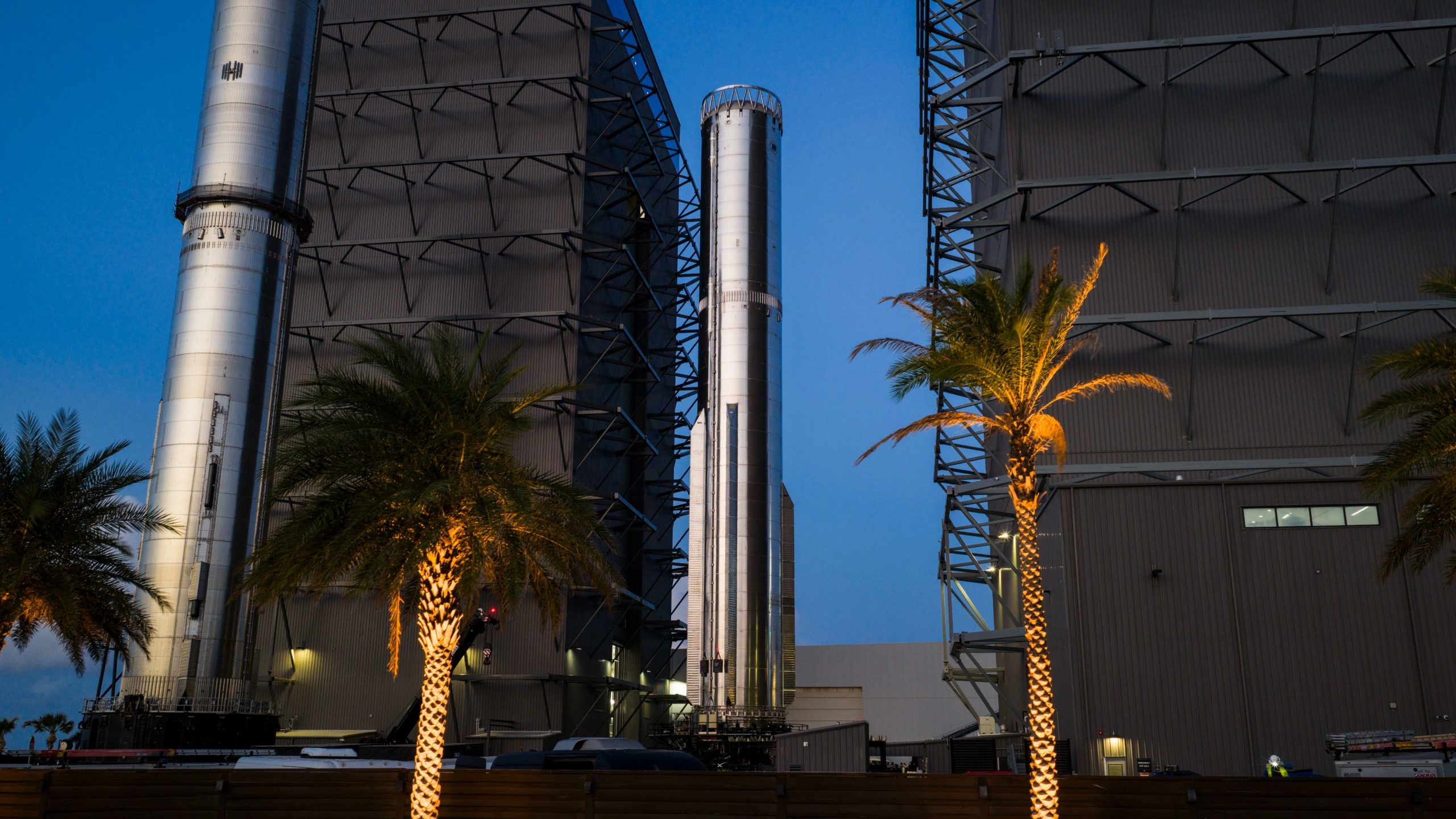
SpaceX’s new Starship first-stage booster, Booster 18, suffered major damage early Friday during its first round of testing in Starbase, Texas, just one day after rolling out of the factory.
Based on videos of the incident, the lower section of the rocket booster appeared to crumple during a pressurization test. Photos of the incident’s aftermath suggest that Booster 18 will likely be retired.
Booster test failure
SpaceX began structural and propellant-system verification tests on Booster 18 Thursday night at the Massey’s Test Site, only a few miles from Starbase’s production facilities, as noted in an Ars Technica report. At 4:04 a.m. CT on Friday, a livestream from LabPadre Space captured the booster’s lower half experiencing a sudden destructive event around its liquid oxygen tank section. Post-incident images, shared on X by @StarshipGazer, showed notable deformation in the booster’s lower structure.
Neither SpaceX nor Elon Musk had commented as of Friday morning, but the vehicle’s condition suggests it is likely a complete loss. This is quite unfortunate, as Booster 18 is already part of the Starship V3 program, which includes design fixes and upgrades intended to improve reliability. While SpaceX maintains a rather rapid Starship production line in Starbase, Booster 18 was generally expected to validate the improvements implemented in the V3 program.
Tight deadlines
SpaceX needs Starship boosters and upper stages to begin demonstrating rapid reuse, tower catches, and early operational Starlink missions over the next two years. More critically, NASA’s Artemis program depends on an on-orbit refueling test in the second half of 2026, a requirement for the vehicle’s expected crewed lunar landing around 2028.
While SpaceX is known for diagnosing failures quickly and returning to testing at unmatched speed, losing the newest-generation booster at the very start of its campaign highlights the immense challenge involved in scaling Starship into a reliable, high-cadence launch system. SpaceX, however, is known for getting things done quickly, so it would not be a surprise if the company manages to figure out what happened to Booster 18 in the near future.
Elon Musk
SpaceX’s next project will produce Starships at a level that sounds impossible
1,000 rockets per year is an insane number, especially considering Starship’s sheer size.
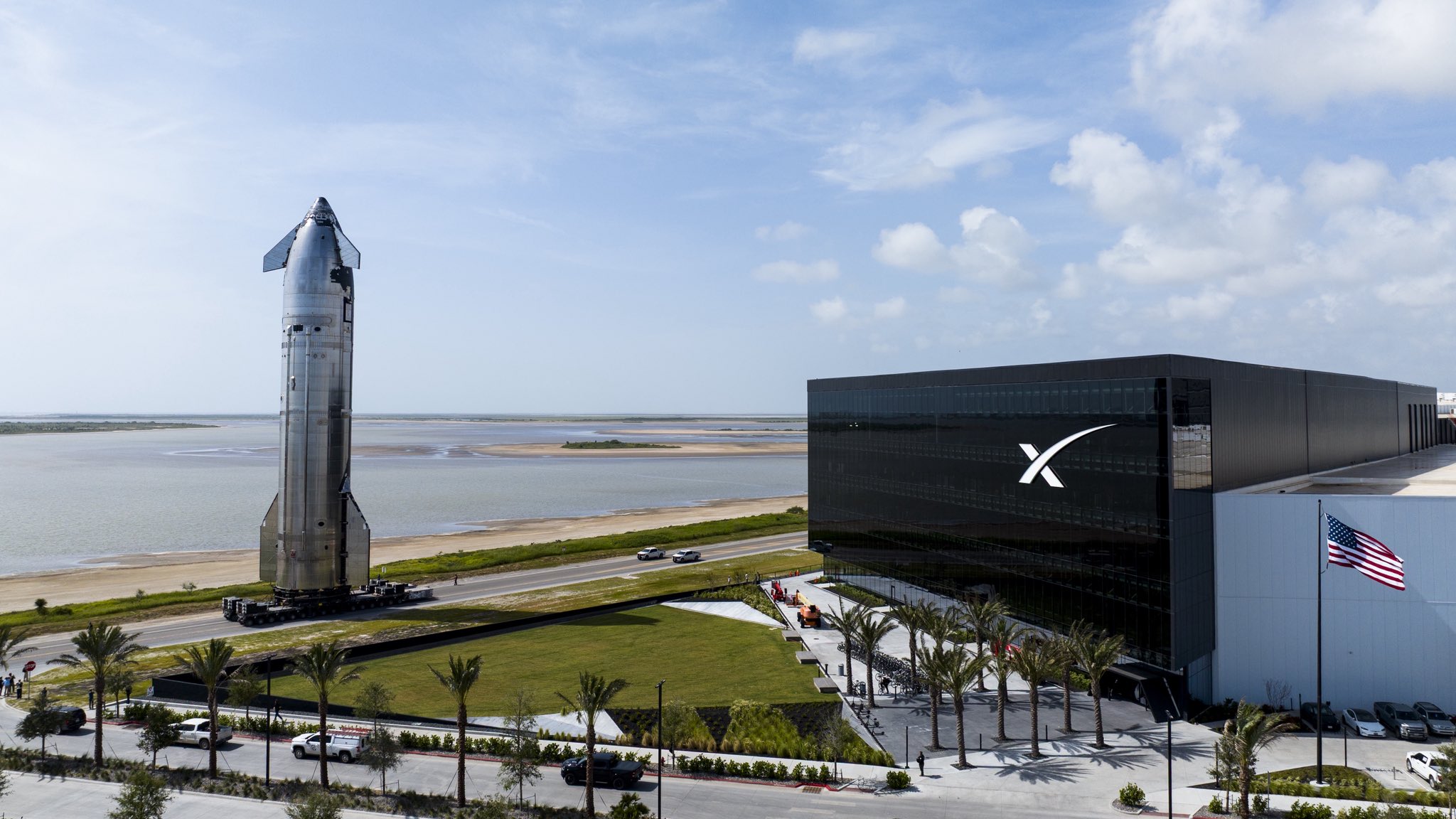
Elon Musk has revealed bold plans for SpaceX’s newest Starbase facility in Texas, predicting it will become a birthplace for “so many spaceships.” The upcoming “Gigabay,” a massive $250 million production hub in Starbase, Texas, is designed to manufacture up to 1,000 Starship rockets per year.
That’s an insane number of rockets for a single facility, especially considering Starship’s sheer size.
One of the world’s largest industrial structures
SpaceX’s Gigabay is expected to stand roughly 380 feet tall and enclose 46.5 million cubic feet of interior space, making it one of the largest industrial structures to date. The facility will feature 24 dedicated work cells for assembling and refurbishing Starship and Super Heavy vehicles, complete with heavy-duty cranes capable of lifting up to 400 U.S. tons, as noted in a Times of India report.
Construction crews have already placed four tower cranes on-site, with completion targeted for December 2026. Once operational, the Gigabay is expected to boost SpaceX’s launch cadence dramatically, as it would be able to build up to 1,000 reusable Starships per year, as noted in a report from the Dallas Express. Musk stated that the Gigabay will be “one of the biggest structures in the world” and hinted that it represents a major leap in Starbase’s evolution from test site to full-scale production hub.
A key step toward Mars and beyond
Starship is SpaceX’s heavy-lift rocket system, and it remains a key part of Elon Musk’s vision of a multiplanetary future. The vehicle can carry 100–150 tonnes to low Earth orbit and up to 250 tonnes in expendable mode. With several successful flights to date, including a perfect 11th test flight, the Starship program continues to refine its reusable launch system ahead of crewed lunar missions under NASA’s Artemis initiative.
Starship is unlike any other spacecraft that has been produced in the past. As per Elon Musk, Starship is a “planet-colonizer” class rocket, as the magnitude of such a task “makes other space transport task trivial.” Considering Starship’s capabilities, it could indeed become the spacecraft that makes a Moon or Mars base feasible.
